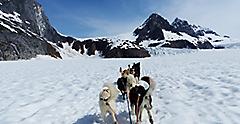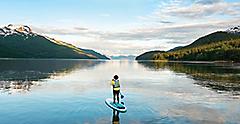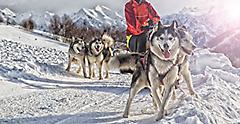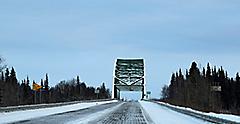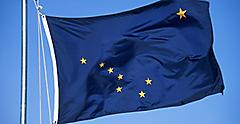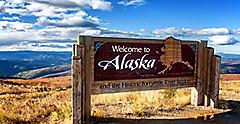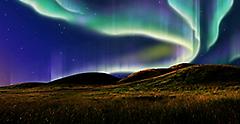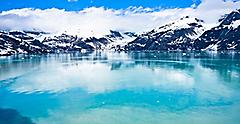By Robert Schrader | Published on September 29, 2023
Summer Fun Under The Midnight Sun
Many such celebrations, of course, are within families or groups of friends and don't have any official recognition. Think: late-night hikes or a camping trip that maybe turns into an all-night celebration because it never really gets dark enough to sleep. Another all-night tradition? Fishing trips that last until the morning. Note that although it's fun, this one isn't the slam-dunk you might think it is. Since fish are as sensitive to the extra light as humans are, they aren't sitting ducks! Other Alaskans stay closer to home, barbecuing in their backyards well past their typical bedtimes.
Other traditions lean more heavily on Alaska native culture. In Juneau, Alaska's state capital, members of the Haida, Tlingit and Tsimshian communities take to the streets every other June for the aptly named "Celebration." This festival, which is one of the most jubilant and rich Alaska holidays you've probably never heard of, sees participants wearing typical costumes of their peoples and performing generations-old songs and dances. If you're lucky enough to attend, you'll have the opportunity not only to enjoy performances but to sample foods and purchases handicrafts that might be difficult to find on your own as a traveler.
Dreaming of experiencing the Alaska summer solstice? While the entire warm season is a time of jubilance in Alaska, there is a formal summer solstice celebration as well. Once again, for some Alaskans, this simply entails making a point of taking part in summer traditions outdoors and in their own backyards on June 21, when even southern parts of the state enjoy around 22 hours of daylight. In larger cities, you may be able to partake in street festivals. For example, in Fairbanks — the main gateway to Denali National Park — the Midnight Sun Festival takes place every year on the Sunday closest to the solstice, when the city basks in light for 24 full hours.
Alaska's Coolest Winter Traditions
When it comes to cold-weather customs in Alaska, sled dog racing is one of the most well-known traditions. One fact that surprises many non-Alaskans? The race actually takes place in early March, during the late part of winter. However, it's still quite cold along the route — which leads from Anchorage to Nome in Alaska's far north — so observers from the Lower 48 are none the wiser. The 10-day race (which originally lasted for 20 days when it began in 1973) started not only as a celebration of Alaska's sled dog tradition but also as a way to keep the tradition alive as snowmobiles threatened to kill it. Even the husky itself was in danger of dying off. As cute as they are, they've always served a utilitarian purpose in Alaska. With that gone, it was unclear as to whether local people would still breed them.
Appropriately, organizers and participants have taken measures in recent years to make sure the dogs who participate receive the most humane treatment. In addition to the fact that only dogs in peak physical condition are allowed to race, they receive top-of-the-line training that would make most professional athletes jealous. They eat nutritious food and get plenty of sleep at night, and while they're expected to perform at a certain level, they are never subjected to abuse or mistreatment, any instance of which results in severe punishment for the offending party. Once the race is finished, the dogs (winner and losers alike) enjoy some much-needed R&R, and of course, they get plenty of love and affection all 365 days of the year!
A lesser-known but equally interesting winter tradition is the Nenana Ice Classic, which — as its name suggests — takes place in Nenana, a small city in the center of the state. Every year since 1906, local residents (and eventually, people throughout the state) place bets on which date the ice of the Tanana River that flows through the city will start to break. While the methods for determining precisely when this happens have become increasingly complex and precise over the years, the basic idea has not changed: The people who guess the correct date win big! And the prize can be very big — with more than $300,000 paid out in 2014 alone.
While November is not technically a winter month, it is extremely cold in much of Alaska. As a result, the fact that it's been designated as the state's annual Alaska Native Heritage Month is relevant. Like many of the months Americans in the rest of the country used to celebrate the contribution of various groups to the broader culture, Alaska Native Heritage Month takes many forms. Some communities have festivals or other performances, while the local media often takes the opportunity to tell stories of important individuals or families, which may go unnoticed at other times of years. November isn't an extremely popular month to visit Alaska, so if you happen to be there then, make sure to pay attention!
Honor Alaska's History
Although many non-Alaskan Americans know the U.S. purchased Alaska from Russia during the 19th century, few understand how important this remains to be to the modern people of Alaska. In fact, many of Alaska's state holidays commemorate this event, without which the state literally wouldn't exist as you know it. If your cruise (or other travel to Alaska) happens to take place concurrently with one of them, you'll have a unique opportunity to grasp the significance of Alaska's birth for yourself.
The most well-known of these holidays, not surprisingly, is called Alaska Day. It takes place every year on October 18, which was the date in 1867 when the U.S. Senate finalized the transfer of Alaska to the U.S. from what was then known as the Russian Empire. Although it's observed everywhere throughout the state, the official celebration takes place in the southern city of Sitka, where a parade marches through town and other pageantry like flag raising takes place. It's important to recognize that while many native Alaskans celebrate this holiday in the same ways non-natives do, many others protest it, since they view both Russia and the U.S. as having stolen the land from their ancestors.
What is Seward's Day? Seward's Day is one of the most important "official" Alaska traditions that takes place every year. Celebrated on March 30, this holiday simply celebrates the signing of the purchase order on the same day in 1867 by William H. Seward, the U.S. Secretary of State at the time (though this is not the date of the transfer of the land itself). While it's not celebrated with as much fanfare as Alaska Day, it seems more important if you consider it during the context of the time. Many of Seward's contemporaries considered Alaska as a frozen wasteland and accused him of wasting funds that could've been put to better use in order to acquire it. Obviously, if you've ever been to Alaska, whether or not you've had a chance to participate in Alaskan traditions, you know that Seward had the last laugh!
Sharing The Wealth
Have you ever heard the rumor that Alaska pays people to live there? Well, it's not a rumor — it's true! The Alaska Permanent Fund Dividend, as it's officially known, is what you might call a profit-sharing system. The state invests proceeds from its rich mineral and oil resources and evenly splits the proceeds among all its citizens. While in the past this was sometimes split into several payments per year, it's recently taken the form of a single lump sum. While it isn't "free money" — the payment is taxable income — it does greatly assist local Alaskans with their cost of living and has become an important cultural tradition as a result.
Now, while the concept of the PFD (to which its name is often abbreviated) is pretty simple, some aspects of the implementation are a bit more complex. Most importantly, beneficiaries need to reside in Alaska for at least 180 days out of each calendar year. So, if you really take a liking to the state after taking a cruise there, make sure you spend at least half your time there if you plan to apply for PFD payments.
For Alaskans who can legitimately draw on this benefit, the rules beyond that are pretty relaxed. They can spend it on almost anything they want — although not surprisingly, many use it to bring down the cost of daily necessities, particularly ones that aren't locally farmed or caught. Like other distant parts of the U.S., many goods in Alaska are imported, which means their cost is significantly higher than what you're probably used to paying. Given that the payment has spiked to over $3,000 per person in recent years, this can really make a massive difference in the lives of Alaskan families.
This is especially true for many members of native Alaskan tribes, whose economic opportunities often ebb and flow according to the climate and other natural realities of the remote places they call home. Of course, it's not entirely accurate to say that the PFD has become a part of Alaska native culture. With this being said, the payments do help to level the playing field for people who, in spite of being the original owners of Alaska, have over the past couple of centuries not always benefitted from the wealth the land has generated, which has sometimes polluted that land in the process.
See Alaska's Cultural Side For Yourself
Get Royal Deals, Sign Up Today

Related Articles

Cruises are the Best Birthday Weekend Getaways | Royal Caribbean Cruises
READ MORE

The World’s Largest Swim-up Bar: Top Things to Do at Party Cove
READ MORE

Perfect Day Mexico: The World’s Longest Lazy River & More
READ MORE

5 Best Weekend Getaway Ideas
READ MORE

